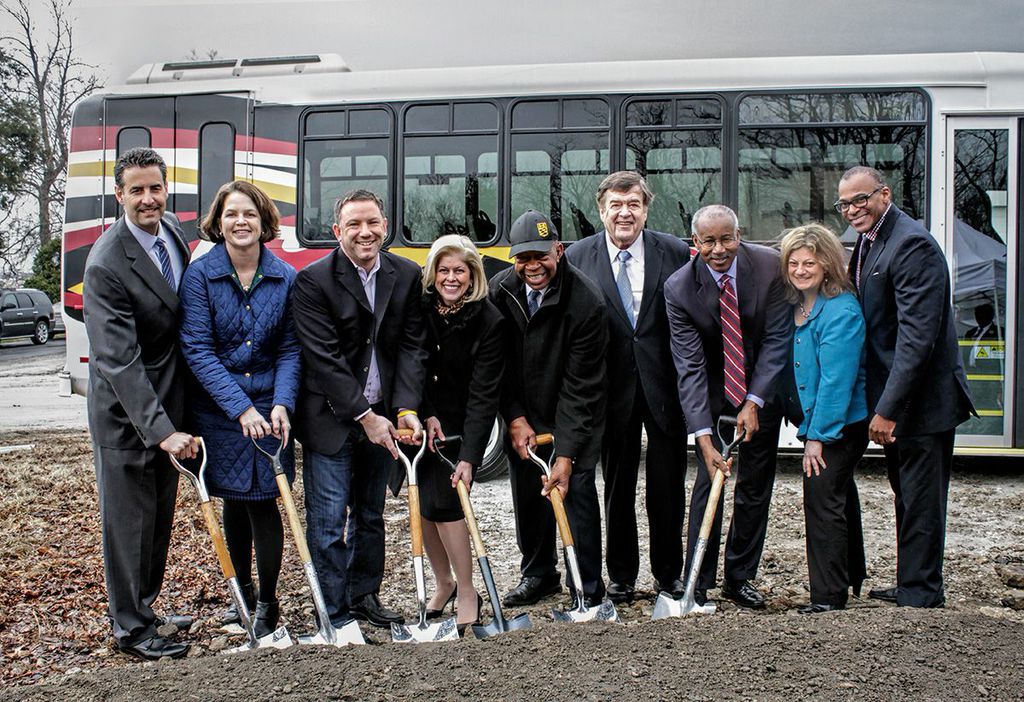
ELLICOTT CITY, MD – Howard County Executive Ken Ulman announced today the successful launch of a new regional transportation organization that will provide cost savings and operational efficiencies for customers in Howard, Anne Arundel and Prince George’s counties and the City of Laurel.
“The future of transportation in Maryland, built on a foundation of regional cooperation, starts now,” said County Executive Ulman. “We have spent years studying ways to improve our service. Our innovative plan creates efficiencies, and today that plan becomes reality.”
Today is the first day of operations of the Regional Transportation Agency of Central Maryland (RTA). The RTA will coordinate all transit services in member jurisdictions, including bus routes and Connect-A-Ride services, and has contracted with First Transit for management and operation of buses that will operate in the member jurisdictions.
Through that contract, cost will be roughly $2 million a year lower compared with the previous structure.
“I am very excited about this partnership with our neighboring jurisdictions,” said Anne Arundel County Executive Laura Neuman. “The Regional Transportation Agency creates a cost-effective, efficient system that will better serve our public transit commuters beginning today.”
“Time and time again, we see that when local governments work together, all of our citizens benefit with improved efficiency, effectiveness and tax payer savings,” said Prince George’s County Executive Rushern L. Baker, III. “The new Regional Transportation Agency of Central
Maryland will greatly benefit millions of Marylanders and specifically the residents of Prince
George’s County. We are very excited to work with our neighbors in Howard County, Anne Arundel County and the City of Laurel on this new endeavor.”
Added Laurel Mayor Craig Moe: “We believe this new system will benefit our residents and produce savings that can lead to better service. The City has long been a champion of regional service in the Greater Laurel area. This makes it happen.”
Among the visible changes that customers may notice either immediately or in the near future:
- Buses adorned with a distinctive swoosh in Maryland’s black, red and yellow.
- RTA insignia on all driver uniforms.
- Uniform three-digit route numbering in all jurisdictions (200s in Anne Arundel; 300s in Prince George’s County; 400s in Howard County; and 500s for regional routes crossing jurisdictions).
- New bus signs, which will include an identifying number so that riders will be able to call and text to find out when the next bus will arrive (with information provided through the NextBus system).
- Paratransit services will now be known as “RTA Mobility;” this will include both the general paratransit service operated throughout Howard County and the ADA complimentary service that will be operated throughout the RTA service area.
- A new RTA website, www.transitRTA.com, to be launched later this month.
- A new system map showing all RTA routes will be available in all bus shelters, and will be distributed to libraries, colleges and other public facilities.
There are service improvements in Howard County. Additional trips will be added next week to Route 406 (formerly the Howard County Transit Red Route), which is one of the busiest routes in the county. Buses will be scheduled at 30-minute intervals instead of the current 60-minute intervals, providing more convenience for riders.
“Residents of Howard County and throughout the region deserve better transportation solutions, and I applaud County Executive Ulman and John Powell, administrator of the Howard County Office of Transportation, for working tirelessly on this plan,” said Howard County Council Chairman Dr. Calvin B. Ball. “When we work together, we develop innovative programs.”
Among 21 vehicles joining the RTA fleet by August 1, 2014, are six Gillig Phantom low-floor buses, four NABI 40-foot buses, eight Thomas HDX 30-foot buses and three Optima 30-foot
In March, ground was broken on a $15 million Regional Transit Maintenance Facility in Savage which will also provide efficiencies and cost savings. The centrally located facility is scheduled to be operational by mid-November 2014.




